The Conwy is one of the UK’s classic white water rivers, a section of which, the Fairy Glen, being one of the best and most reliable grade 4+ to 5 sections we have on this island. And now it is under threat.
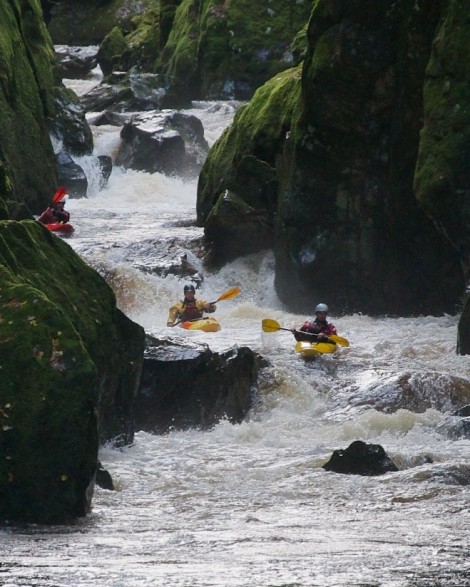
Paddlers travel from far and wide to paddle ‘The Glen’ – here’s American paddling god Erik Boomer being shown the lines by local hero Tom McLay and Devon’s Tom Rainey.
If you’ve not heard about this, then please take a look at the newly set up website www.savetheconwy.com.
In summary, RWE NPower are proposing to put in a 2 metre weir by the take out of Middle Conwy (above Conwy Falls). This will create a pool at normal flows, and is expected to back up into the last rapid of the Middle (or the best rapid of the Middle). The weir will be used to extract up to 75% of the Conwy’s flow into a tunnel and pipe which will be taken through neighbouring ancient woodlands and SSSIs until it is reunited with the river downstream of the confluence with the Lledr. This will result in far less water making it into the Fairy Glen.
But it’ll generate power, that’s good right?
If they are prepared to destroy a designated Area of Outstanding Natural Beauty (AONB) and risk the economic affects of loss of tourism to the area (to mention just a couple of adverse affects), surely the scheme will at least generate a lot of power? Sadly not. Even when running at maximum capacity the scheme will only generate 5 Mega Watts – about the same amount used by a small town such as Betws y Coed. The scheme’s own designer readily admitted that over certain periods of the year, and certain river levels all year, the scheme would run at just a fraction of it’s full potential, or even not generate anything at all!
When you compare the proposed output of this scheme to that of the nuclear plant being built on Anglesey, for example, it seems like a drop in the ocean – and surely not worth the destruction. I’ll accept that some people will never like the idea of nuclear, but if hydro power is what we really need, there several other viable locations within just a few miles of this site; some of which have even been surveyed and declared viable by the same contracting company!
So why is the scheme even being considered?
Put simply: money. Land-owners (in this case the Forestry Commission and Foelas Estate) will earn a lot of money from these sort of schemes; while the Green Subsidy Tax on our energy bills provides most of the money for the initial construction. RWE NPower will earn vast sums of money, but only if the scheme goes ahead. It is in their interest to present “studies” that make the site seem perfectly suitable.
Why is this so important?
Well, it’s not just kayaking that will be lost (an estimated 42% loss in days when the Fairy Glen will be paddleable). There are many rare species at risk, local businesses will be affected – especially during the many months of construction works – and the knock on affects on tourism to the valley could be massive.
This could be the start of a slippery slope: RWE NPower are also looking at sites on the Mawddach and Gain, amongst other classic Welsh Rivers. We need to put a stop to it before it’s too late and all of our rivers are piped underground, with delicate ecosystems destroyed in the process.
What can you do?
At this stage we mostly need to make people aware of what is happening. Soon RWE NPower will submit a planning permission request and request a water extraction license: this is our chance to raise objections. We may also require letters written to your MP, especially if you live in Wales. The facebook page and website will be kept up to date with this information as it happens and calls to action will be made.
- Get informed: read the articles on www.savetheconwy.com and other sources
- Stay up to date: like the facebook page for updates
- Spread the word: let other people know what is planned for this unique and beautiful place. Not just kayakers… this will affect hundreds of people from many walks of life across North Wales too.
- Add a twibbon to your facebook and twitter profiles: twibbon.com/support/save-the-river-conwy
- TAKE REAL ACTION: if you have any means to help prevent this hugely-destructive-very-little-output scheme, please use it!
EDIT: First call to action is NOW! NRW are consulting now on the future management of rivers in Wales - click here to find out what you can do to help!
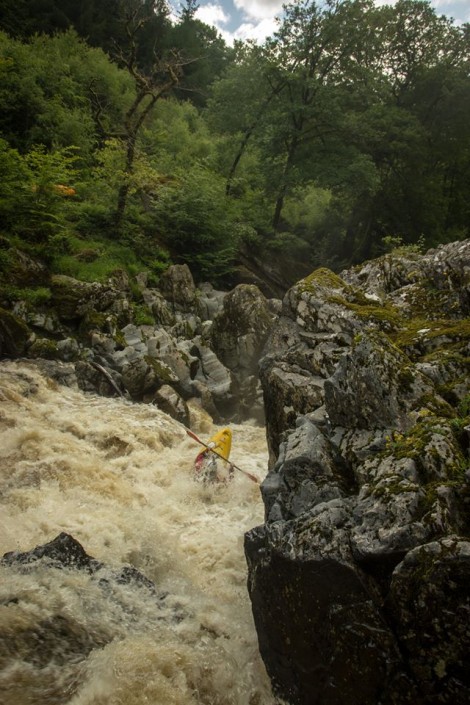
Yours in boating,
Lowri (on my way to another dam-endangered whitewater mecca, the White Nile… but that’s another story)

Greg Daspher drives 50 km each way from Squamish almost every day in the high water season to kayak the Callaghan creek. This river is at immediate threat for a hydro dam.
Calling European Alps my home left me stunned by the amount of unpopulated nature and free-flowing rivers in British Columbia. European kayakers can only imagine how much of our good white-water has been lost to the dams. Yes, I know I use electrical power every day and I’m aware that there’s a need to compromise in contemporary world, but who can blame me for loving the untouched nature? BC still has plenty of it and I feel serenity and amazement every time I find myself far away from anything reminding me of human civilization, except for maybe an old deserted logging road, which often tends to present the only access to the rivers here.
While big dams’ impacts are quite evident, from big populations of people having to be relocated, huge changes to the environment and even effects on climate, there seems to be much less general public concern regarding small dams and diversions. Why should we care about a small creek in a middle of nowhere, right?
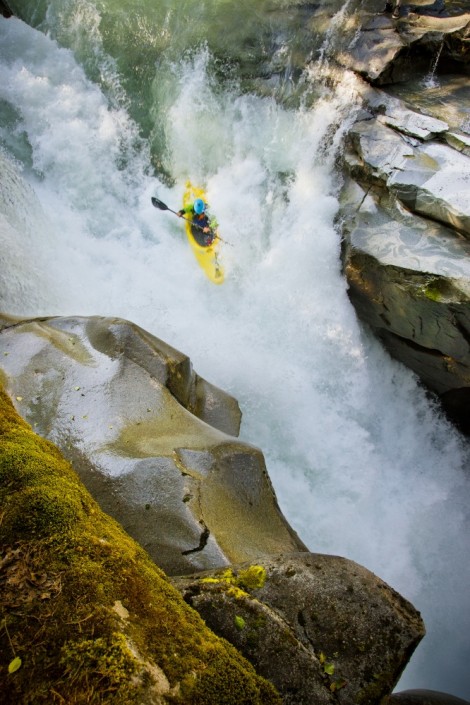
Me on a renowned Ashlu rapid 50/50. A diversion dam has been built on Ashlu creek in 2009. Being a kayakers’ classic, kayakers (or somebody aware of the issue) managed to negotiate flow release dates for recreational kayaking.

Ashlu creek sees many kayakers on the dam release dates.
Hydro dams and diversions do not fit best into the wild environment and they tend to make river sections unrunnable for kayakers. Those are good enough arguments to have me opposing them, but they aren’t the only cons there are. Just from environmental point of view, small dams also fiercely affect fragile river ecosystems and can have devastating effects on fish populations. Most of them being hidden from our sight of view doesn’t change that fact. Read THIS report for a reference of incidents just around Squamish. It is also notable, that many of these projects produce most of their power at a time of spring run-off, time when there is no shortage of power generated by existing facilities. Finding a right balance between satisfying power needs while trying not to leave major ecological impact is challenging enough, but there are some deeper concerns involved with the trends of hydro power plant development, not only in BC, but anywhere in the world.
But let’s go back to a beautiful July morning, when me and a few kayaker buddies decided to go run a small creek named Skookum, located just a few kilometers outside of Squamish. We knew that not too long ago Run of River Power inc., a private energy company, started building a diversion dam far above the classic kayaking section of this very small creek. Having experience with European construction workers and security procedures involving such projects I expected being rejected before even asking about letting us kayak the section, on what would probably be a last attempt before they dam it. Instead we were welcomed by very nice workers, who were all trying to help us get to the river. I remember one of them saying “we are locals too and we are trying to work in the best interest of land and our community.” At the end we didn’t get to kayak, because we couldn’t find a put-in, after the landscape has been changed so much by construction work, that we couldn’t match it to the old river descriptions. It was my only day off for a while so sadly we didn’t make it back before the water level dropped too much.
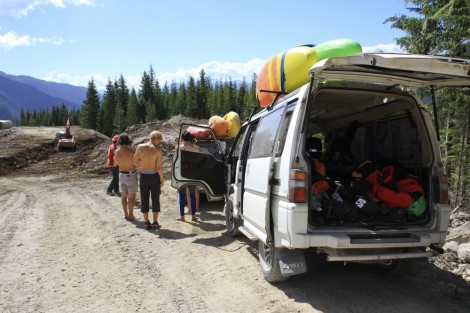
Looking for a Skookum creek put-in. The old beta said drive to the end of the road. New road was built in a matter of months and is far longer than the old one.
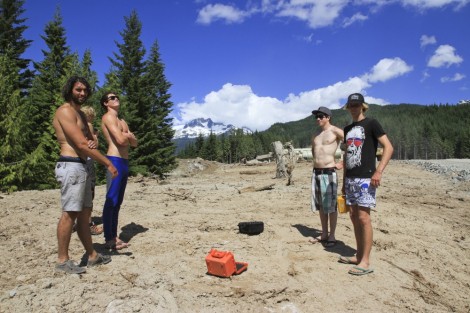
Unrecognisable hill top at the Skookum creek. This was all forest just half a year ago.
Interesting is a story of Ashlu creek. Innergex is a company that owns the controversial Ashlu diversion. After strong opposition from kayak community, a compromise agreement has been made, which granted kayakers flow release dates. At the end kayakers were left with even more days with runnable water levels than before. It seems that a great battle has been won and a case example set for better relations between kayakers and any energy corporation.
It almost seems like we should applaud these corporations for their concerns for the local communities and kayakers, but who especially needs applauding are their PR departments. This situation inherently reminds me of how “philanthropic” financial institutions, like Rockefeller foundation, supported anthropological researches to better understand and communicate with indigenous people in faraway lands. Of course the agenda there was to avoid any resistance and to optimize conditions of exploitation of these lands.
After asking what do local communities, local environment and society in general gain with these interventions in nature, it is clear that something smells fishy. Quoting Hydropower Reform Coalition on a case of Washington State, about twice as much energy could be made just by improving efficiency of existing dams, than as building dams on potentially exploitable rivers. Energy corporations’ major argument pro building these is also providing jobs to locals. The fact is that most of workers on these projects aren’t locals and the jobs are available only for a time of construction. I believe that local communities can lose a lot more in long term by scaring their beautiful untouched nature and making it less attractive for tourism. Do locals get cheaper power after construction is done? Who is making profit here? If energy corporations are making profit, they are making it by selling power to faraway lands (because BC has enough power in time of spring run-off LINK and that’s the time when most excess energy is produced by small hydro dams) – and nobody but they seems to be making profit of it. Learning all that makes it clear that somebody did a really good job in “educating” locals, fishermen, environmentalists and us kayakers that in fact we are scoring a good deal.
Should we really let ourselves be silenced for getting some treats? The big question is where does this trend lead to? Maybe today these companies aren’t making much profit of it. But imagine the world decades from now. Who knows what can happen. Northern countries have plenty of water now, but the climate is changing and the glaciers are melting fast. What does privatization of water sources lead to in times when water can’t be taken for granted any more?
I’m happy to see there is more and more concern and awareness about this issue. I love a short educational video Hydro Power Reform has published on vimeo: Small Hydro Power. There has also been a noticeable revolt from the local kayaking community in the Southeast BC, though it has been largely limited to the rivers that are often used for recreational purposes. Cheers especially to the efforts of Steve Arns, Ric Moxon and other local kayakers for their swift and strong opposition to Innergex’s consideration of diverting one of Southeastern BC’s most kayaked and overall most impressive runs around, the Callaghan creek. If they can divert a river with such importance to us, kayakers will be shown to have no real power at all. Join a facebook page Save the Callaghan and educate yourself to help with the cause. The Callaghan race saw the most racers in its 4-year history so far. 52 competitors showed up, not just to compete, but to show tribute to this amazing creek and help support the efforts to leave this creek free-flowing. We can’t do much if we are few, but these numbers and the efforts of some people leave space for optimism.
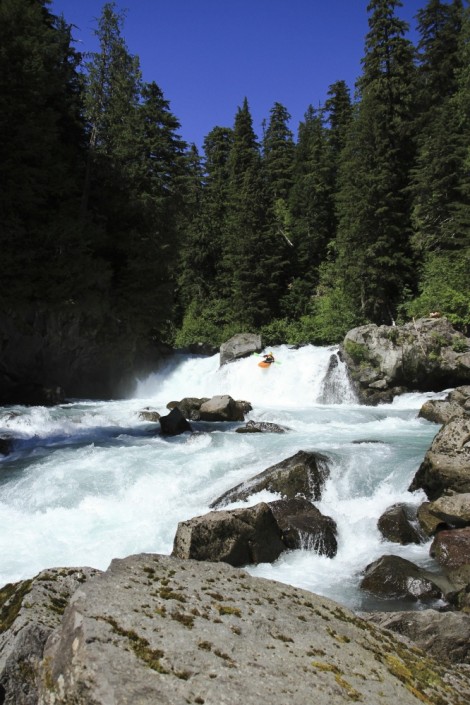
My Callaghan Race team buddy Marlow McGregor enjoying the Callaghan rapids.
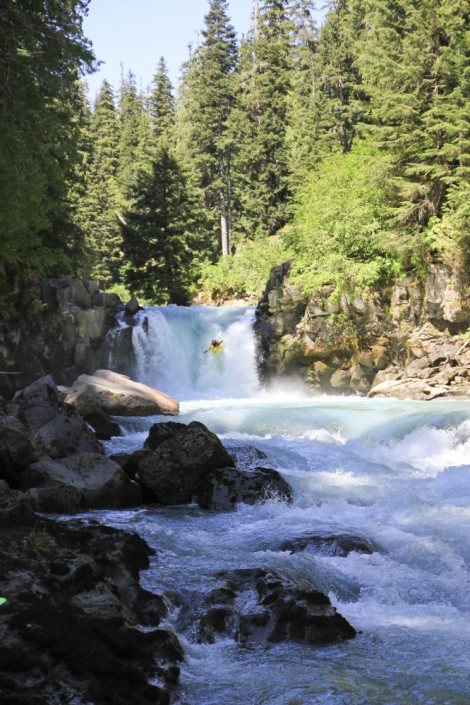
Callaghan creek. As good as it gets!
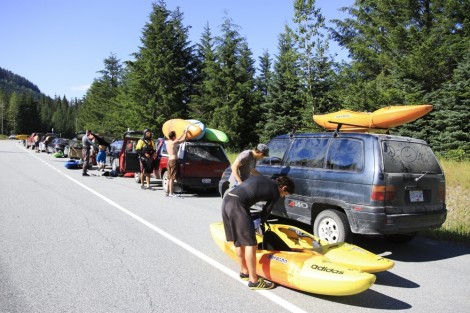
Crowd at a new Callaghan put-in before the race.
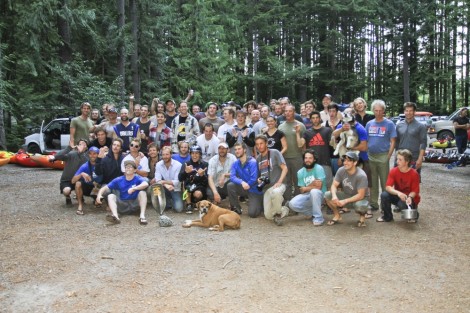
A group shot after the Callaghan Race.
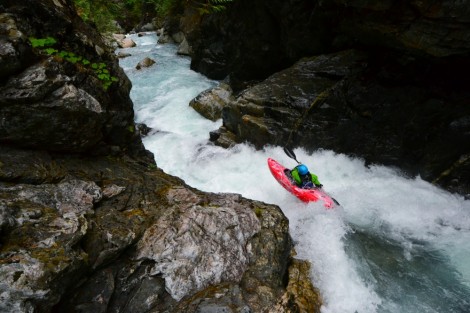
Free flowing, remote and extremely beautiful. Tatlow creek is pure heaven for kayakers. Photo credit Jordan Bastin.
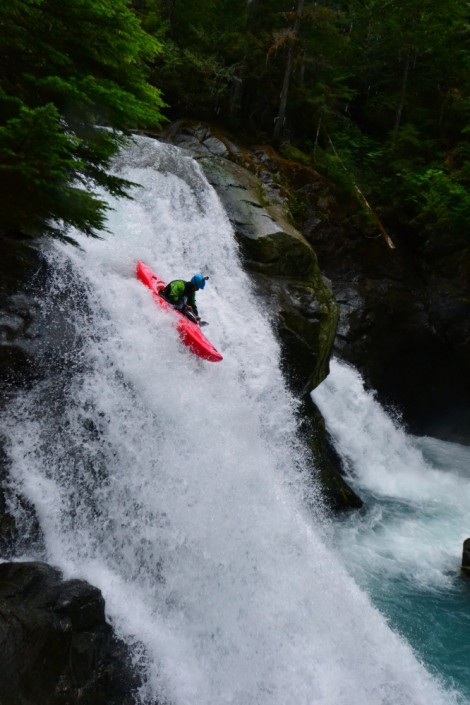
Me on a Tatlow creek 40 foot Slide. Photo credit Jordan Bastin.




















